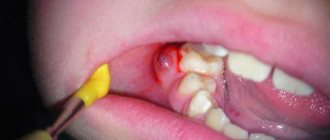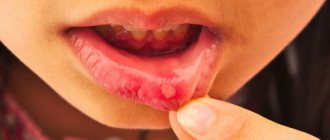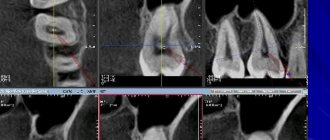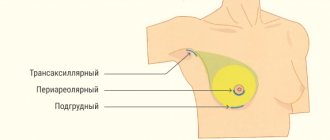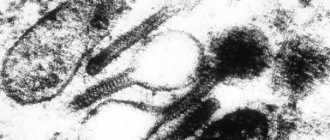Dental granuloma is an inflammatory formation at the apex of the root. It is a proliferation of granulation tissue. Granuloma is formed as a result of the action of protective mechanisms in which the body localizes the source of infection and seeks to isolate it from other tissues. According to ICD-10, the disease was assigned code K04.5.
Typically, a granuloma is formed against the background of inflammation of the neurovascular bundle - the pulp. If pulpitis is not treated, its root part becomes inflamed, and the infection spreads beyond the boundaries of the tooth, into the peri-root tissue. As a result, a kind of pouch is formed, filled with decay products of dead cells.
A granuloma is considered to be a formation up to 0.5 cm in size, but it can grow, and as it grows, it transforms into a cystogranuloma, the size of which reaches 1 cm. With a diameter of more than 10 mm, we are talking about a tooth root cyst. There is no cavity in a granuloma; it is an area of tissue surrounded by a capsule. Due to the latter, the granuloma is firmly attached to the apex of the tooth root.
Cyst and granuloma of the tooth
Previously, it was generally accepted that if a neoplasm on the root of a tooth measures up to five millimeters, it is a granuloma, and if it is more than ten millimeters, then it is a dental cyst. Some dentists also distinguish a certain transitional stage - cystogranuloma, but practice shows that there are granulomas reaching even twelve millimeters, so an accurate diagnosis cannot be made only by the size of the formation and its shape. In addition to X-rays, histological examination of tissues is necessary.
The question often arises of how a granuloma differs from a dental cyst. The fact is that a cyst is a bladder filled with fluid or pus, with a shell formed by connective tissue and lined on the inside with endometrium. Secretory fluid is produced by the membrane, and due to this the cyst increases in size. Granuloma grows due to the growth of tissues containing infected cells.
Cystotomy
The cystotomy procedure consists of several successive stages.
After drilling out the tooth, the dentist carefully cleans the root canal and removes the pulp. During a very deep cleaning of the canal, the doctor gets to the shell of the cyst and removes its upper part, after which the contents are pumped out of the neoplasm, and the walls of the cyst are treated with disinfectants. Then a special paste is placed into the canal and it is closed with a temporary filling. During subsequent dental visits, tissue healing is assessed. If the tissue heals quickly (which indicates that the infection has been destroyed), then the canals are sealed and a permanent filling is installed.
Tooth granuloma - symptoms and causes
Is it possible to live with dental granuloma? Yes, but you may not know about its existence for quite a long time: it is often asymptomatic and is detected only on an x-ray, which is performed for a completely different reason. However, it can be assumed if pain occurs when pressing on a tooth or getting into solid food. This condition should not be ignored, as it shows that an inflammatory disease is developing in the oral cavity. It can lead to a decrease in bone volume, resorption of tooth roots and ultimately to tooth loss. The consequences of advanced dental granuloma can be much more serious: perimaxillary abscess, phlegmon, jaw ostiomyelitis.
The hole after tooth extraction is a potential source of infection, which without treatment can lead to the formation of granuloma. Careful treatment of the hole by a doctor and following his recommendations after surgery will protect you from the disease.
Patients often wonder if dental granuloma can go away on its own? The answer to this question is no. It only indicates that an inflammatory process is occurring somewhere nearby, and if you don’t get rid of it, the consequences can be sad. Granuloma under a tooth is tissue saturated with capillaries. It isolates the infection within itself, preventing it from spreading further throughout the body. If the infection is not eliminated, it will continue to grow.
It should be noted that it itself is not a source of infection. This is just the body's reaction to an infection in the tooth. Accordingly, if you get rid of the source of infection, then the granuloma will go away by itself as unnecessary.
Material and methods
54 patients (36 men, 18 women) aged 18 to 43 years suffering from CGP were examined, of which 19 (15 men, 4 women) were diagnosed with OPGL. The comparison group consisted of 30 patients aged 18 to 45 years living in St. Petersburg and the Leningrad region, examined as part of routine rehabilitation without signs of these diseases.
The study material was the saliva of patients. Saliva collection was carried out in the morning from 9:00 to 10:00. Before collecting saliva, the patient rinsed the mouth with 100 ml of a warm pale pink solution of potassium permanganate. After this, over the next 10-15 minutes, the patient collected saliva in a dry test tube in an amount of about 7 ml.
Salivary content of pro-inflammatory (interleukin-1β (IL-1β), interleukin-6 (IL-6), interleukin-8 (IL-8), tumor necrosis factor-α (TNFα)) and anti-inflammatory (interleukin-1 receptor antagonist ( RAIL), interleukin-4 (IL-4), interleukin-10 (IL-10)) cytokines were determined by enzyme-linked immunosorbent assay using kits according to generally accepted recommendations [19, 20].
Processing of digital data obtained during the survey was carried out using standard methods of variation statistics. Comparison of mean values was performed using Student's t-test. The material was processed on a computer using a specialized package for statistical analysis, Statistica for Windows v. 6.0. Differences between the compared groups were considered significant at p
≤0.05.
Cases where the probability values of the p
were in the range from 0.05 to 0.10 were regarded as “the presence of a trend.”
Treatment of dental granuloma: what to do?
Today, therapeutic treatment of dental granuloma is successfully carried out; in some cases, dental granuloma is treated with a laser, which does not require tooth extraction. As a rule, it is necessary to carry out high-quality endodontic treatment of the canals: cleaning, rinsing with an antiseptic and filling. They must be carefully sealed so that infection cannot enter from the oral cavity. Subsequently, the dentist monitors the condition of the tooth and the tissues around it. After five to six months, an x-ray should be taken, and if the tumor decreases in size or disappears, the therapy is considered successful. If it continues to grow, this makes it possible to diagnose not a granuloma under the tooth crown, but a dental cyst and re-treatment, which is carried out by a surgeon.
Cost of treatment
| Inspection, general recommendations | For free |
| Anesthesia | |
| Appliqué | 200 |
| Injection | 550 |
| X-ray diagnostics | |
| Dental image without printing on a printer | 300 |
| Panoramic shot | 850 |
| Professional oral hygiene before treatment of caries, pulpitis, extraction, prosthetics, implantation | 3500 |
| Endodontic treatment | |
| Ultrasound treatment of 1 channel (endochak) | 400 |
| Treatment of pulpitis and periodontitis | |
| Mechanical and medicinal root canal treatment | 950 |
| Filling one canal | 950 |
| Unsealing one channel | 1160 |
| Processing the "Protaper" channel | 1200 |
| Absorbent with medicinal substance | 390 |
| Temporary filling of one canal “Calasept” | 850 |
| Removing the anchor pin from the root canal | 990 |
| Installation of anchor pin (stainless steel) | 790 |
| Installation of anchor pin (titanium) | 1160 |
| Dental filling (1-2 surfaces) | |
| Light-curing filling “Charisma” (Germany) | 2800 |
| Light-curing filling “Filtek” (USA) | 3970 |
| Restoration and cosmetic restoration of teeth (3 or more surfaces) | |
| Light-curing filling “Charisma” (Germany) | 3160 |
| Light-curing filling “Filtek” (USA) | 4260 |
Payment by installments / Tax deduction
all prices
Removal of tooth granuloma
If therapeutic treatment of dental granuloma does not help, surgical intervention is used. From the outside, through the bone, access is made to the tooth root, the granuloma is scraped out, the place of its attachment is carefully processed, and the mucous membrane is sutured. In some cases, the infected root tip of the tooth is excised. Subsequently, the bone is restored, and the tooth continues to serve for a long time. Sometimes it is necessary to remove the entire root. This is also a common operation today. In this case, the desired root is excised along with the coronal part, and if the remaining roots are able to withstand the required load, a prosthesis is installed in this place.
If a tooth granuloma has been removed, but pain or inflammation remains, and it is painful to press on the tooth, you should contact a dentist in Moscow again. The situation when a tooth hurts after treatment or removal of a granuloma is common. The pain may persist for a long time, but you should make sure that there is no inflammation and that this pain is truly residual and not an indicator of another problem.
DIAGNOSTICS
Only a dentist can make a correct diagnosis based on an x-ray. In the image you can see a small darkened area near the root of the tooth.
Radiovisiography can also be done in the hospital. This is a type of x-ray with less radiation. The results are assessed not in the picture, but on the monitor screen. For this reason, such a survey is often called digital.
Granuloma is best recognized at the first stage. It is often detected during the treatment of other dental diseases. In addition, doctors pay attention to abnormal swelling of the gums, which is very painful. Also, the protrusion of bone near the apex of the tooth comes to the attention of doctors.
A special category includes patients with installed crowns and pulpless teeth. Granuloma occurs much more often in such people. Doctors pay special attention to these people.
Treatment of dental granuloma with antibiotics and physiotherapy
Dentists often suggest treating dental granuloma with antibiotics. As a rule, this is only a temporary solution to the problem, since it does not eliminate the source of inflammation, and after some time the disease will return. Dentists successfully use physiotherapeutic treatment methods. For example, depophoresis works great for curved or complex tooth canals. Its action consists in the effect of a weak electric current on a suspension with copper hydroxide, which relieves inflammation, penetrating into all corners of the tooth.
WHAT IS THE FORECAST
The prognosis of treatment always depends on the severity of the disease. Everything influences: the stage of development, complexity and methods used in treatment. Treatment in the first stages of the disease always gives only a positive prognosis. Antibiotics and therapy always help. Granuloma in childhood also responds well to treatment.
If the granuloma is at the stage of pus appearing, success depends on where the source of inflammation appears. If it is the root of a tooth, then most likely the prognosis will be unfavorable and the tooth will have to be pulled out. If suppuration occurs only in the gum, then the contents are cleaned out using drainage. The patient is also prescribed a course of antibiotics.
Failure to treat granuloma may well lead to death. Like this? The resulting pus penetrates the muscles and enters the heart area. The result is sepsis, which leads to death.
Yes, granuloma is a completely unpleasant and dangerous disease. If this is the initial stage, then there is no need to worry. You should go to the hospital without hesitating for a minute. The patient must try to avoid extreme stages.
Is it possible to put a crown on a granuloma on the root of a tooth?
Dental prosthetics imposes special requirements on the doctor and the patient. If we are talking about installing a crown on a tooth of which no more than 1/3 remains, that is, only the root, then it must be carefully prepared: the canals are sealed, the infection is eliminated. A granuloma under a tooth is an indicator that an inflammatory process is occurring in the tooth, and before dental prosthetics it is necessary to get rid of it, or sooner or later the granuloma will still have to be treated, since it can become inflamed under the crown. So why not do this right away, before installing a denture?
COMPLICATIONS
Untreated granuloma leads to:
- To complete loss of a tooth. This happens due to complete destruction of the root. As a result, soft tissues are drawn into the inflammation process, in which pus accumulates.
- Osteomyelitis of the jaw.
- Formation of a dental cyst.
- Cancerous tumors.
- Infection of other organs and the development of sinusitis, pyelonephritis and infectious myocarditis.
- If pus gets into the skull, meningitis, encephalitis and inflammation of the peripheral nerves may begin.
- The appearance of migratory granuloma. Manifests itself in the form of protrusion of the facial skin. The disease also appears in the form of abscesses and fistulas in different places.
Tooth granuloma and folk remedies: will there be any benefit?
As we have already found out, granuloma occurs as the body’s response to inflammation that occurs in the tooth canals or periodontal tissues: a kind of tubercle of tissue appears under the tooth, absorbing and processing microbes. Is it possible to cure dental granuloma without seeing a doctor? At home, treating granuloma on the root of a tooth with folk remedies can be a dangerous undertaking. It is unlikely that with the help of herbal decoctions you will be able to get rid of infection in the dental canals. You can alleviate the condition by rinsing with tinctures based on calamus and propolis. Sage, chamomile, eucalyptus, calendula, oak bark have an antiseptic and antibacterial effect, and rinsing with decoctions of these herbs can alleviate the symptoms of the disease, but this is a temporary measure, since dental granuloma cannot be cured in this way. All this should be used in complex treatment after consultation with a dentist-therapist.
